An era was over. On February 15, lovers of Bengali music were shocked to hear of the death of 90-year-old singer Sandhya Mukherjee. One of the most versatile vocalists, she was equally at ease with film songs, folk songs, Rabindra Sangeet, bhajans and modern Bengali songs, having recorded since 1945. Just a few weeks before, she had refused to accept the Padma Shri on the grounds that it was offered too late.
Mukherjee passed away on the same day as 69-year-old Bollywood music director BappiLahiri, also from West Bengal. This happened nine days after the sad news of Lata Mangeshkar, who had also sung extensively in Bengali, with music directors Salil Chowdhury, Hemant Kumar, S.D. Burman, R.D. Burman, Sudhin Dasgupta and BappiLahiri. Even Kishore Kumar composed the song ‘Priyotomo, Ki LikhiTomay’ for Lata.
For a few days, Bengali aficionados were ridden with grief, listening to songs by these artistes, and narrating nostalgic anecdotes. After all, West Bengal has had one of the most vibrant and diverse musical cultures in India, with many singers and music directors making it big in Hindi films. Many people, including non-Bengalis, also love the Bengali songs of S.D. Burman, R.D. Burman, Salil Chowdhury, Hemant Kumar, Kishore Kumar, Asha Bhosle, Geeta Dutt, Talat Mahmood, and Manna Dey, who were known across India for Hindi film songs. Older artistes like K. C. Dey, Pankaj Mullick, Timir Baran and Anil Biswas made their mark in the region. Very often, aficionados have accidentally discovered Bengali songs of their idols on YouTube and ended up finding a wealth of music by the other old-time greats.

There’s of course much more that the region has to offer besides film music. To mark Bengali Year on April 15, let us take a look at different genres popular in the state.The West Bengal music industry is divided into the film, non-filmand classical categories, with a lot of non-film music now being released independently. Within non-film music, there are poetry-based forms like Rabindra Sangeet, Nazrulgeeti and Dwijendrageeti. Then, there are modern or “adhunik” songs, devotional songs specially released around New Year’s in April or Puja time in October, Bangla rock bands and folk music, which comprises Baul, Bhatiali, Shyama Sangeet, Jhumur and related forms.Recently, folk-fusion has become popular mong youngsters.
For those new to Bengali music, it would be in order to describe some of these genres briefly.
Rabindra Sangeet:Also called Tagore songs, these were written and composed by the legendary Rabindranath Tagore. It is estimated thar Tagore wrote over 2,200 songs. Influenced by the thumri style of Hindustani music, they ran the entire gamut of human emotion and emulated the tonal colour of classical raags.
Nazrulgeeti: These are songs based on the poems of Kazi Nazrul Islam, whose writings explored the themes of freedom, humanity, love and revolution. His work greatly inspired Bengalis of East Pakistan, which later became Bangladesh. He moved to Dhaka in 1972, and stayed there till his death in 1976.
Dwijendrageeti: These are the works of Dwijendralal Ray, one of the most important figures in early modern Bengali literature. He has written about 500 songs, popular ones being ‘Dhana Dhanya Pushpa Bhara’ and ‘Banga Amar Janani Amar’.
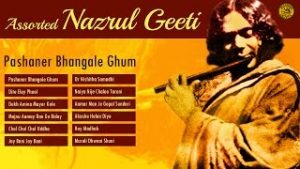
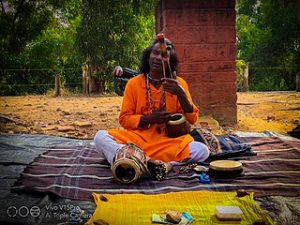
Baul: The Bauls are a group of mystic minstrels, comprising both Muslim Sufis and Hindu Baishnos, who sang primarily in the 17th and 18th centuries. The influence of both religious streams is thus found in their music. They travelled and sang in search of the internal ideal, or Moner Manush, and did not believe in differences between religions. Lalon Shah was said to the pioneering figure. In the 20th century, Shah Abdul Karim, BhabaPagla and Purna Das Baul carried the tradition forward. Paban Das Baul and Parvathy Baul are among the known names today.
Bhatiali: It is a form of folk music found both in West Bengal and Bangladesh. It is a river song sung mostly by boatmen, and is thus heard mostly in the delta region. The lyrics use metaphors evolving around rivers and water, and talk of the lives of boatmen and their families.
Shyama Sangeet: This is a genre of Hindu devotional songs dedicated to goddess Shyama and Kali. The songs describe the bond between mother and child.They are free of common rituals of worship and the practice of tantra. The late Pannalal Bhattacharya was known for his contribution to this form of music.
Jhumur: This is an ancient form of folk song, and if often accompanied by dance. Many songs are based on the story of Radha and Krishna. Originating in West Bengal, it also spread to the border regions of Bangladesh.
Over the past two decades, many singers have focused on the modern or ‘adhunik” songs category. Established artistes like Lopamudra, Anupam Roy, Anjan Datta, Nachiketa, Srikanto Acharya, Kabir Suman, Jayati Chakraborty, Iman Chakraborty and RupankarBagchi have their own fan following, whereas Hindi playback singers Shaan, Shreya Ghoshal and Arijit Singh keep recording Bengali songs.
At the same time, older legends like the late Suchitra Mitra, Shyamal Mitra, Debabrata Biswas, Sandhya Mukherjee and Hemant Kumar continue to be heard by the senior generation.Arati Mukherjee has a following among different generations.
In an earlier interview with this writer, popular singerLopamudra said older styles like Rabindra Sangeet and folk music will always have an audience among the older generation.“However, during the past three years, I have noticed that modern songs have reduced in popularity, and even the quality has dropped. Film music was gaining for a while, till it was affected by the lockdown,” she said.
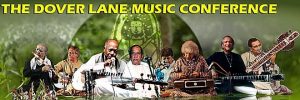
Other genres have been popular too. Classical musicians like vocalist Bade Ghulam Ali Khan, sitar maestros Ustad Vilayat Khan and Pandit Nikhil Banerjee, sarod great Ustad Ali Akbar Khan and flautist Pandit Pannalal Ghosh have spent time in Calcutta in the early part of their career. Established in 1952, the Dover Lane Music Conference has been one of the major classical music festivals in the country.

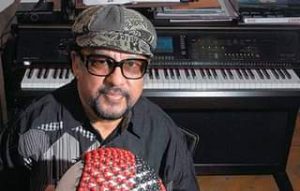
Western music had its own audience. Till the mid-1970s, Park Street in Kolkata had some fabulous jazz shows, featuring keyboardist Louiz Banks, vocalist Pam Crain, saxophonist Braz Gonsalves, guitarist Carlton Kitto and others. American pianist-composer Dave Brubeck, who toured India in 1958, wrote the piece ‘Calcutta Blues’ in tribute. Trumpeter Dan Pawson played a piece ‘Ladies Of Calcutta’ which was later sung by Peter Sellers.Singer Usha Uthup has been one of the popular artistes on the Kolkata live scene. This is besides rock bands like High, Shiva and Shillong’s Fentones, and the emergence of Bangla-rock as a genre.
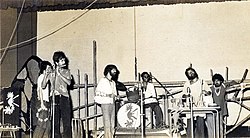
The Bangla-rock movement was started by the group MoheenerGhoraguli in 1975. They blended rock and jazz with Bengali folk and Baul music. Over the years, many Bengali-singing bands have gained an audience. These include Krosswindz, Chandrabindoo, Fossils, Bhoomi, Cactus, ParashPathor, Kalpurush, Eshaanand Lakkichhara. Bands from Bangladesh also found a market, a popular band being Bangla featuring Anusheh.
According to virtuoso guitarist Neil Mukherjee, the entire sound changed sometime in the 1990s, as metal influences began to come in and audience tastes changed.
Of late, there has been a surge in folk-fusion bands like Maadal, Fiddler’s Green, the Miliputs, and Kaahon.
Clearly, the region is filled with music that can cater to any kind of palette. From traditional to trendy, classical to commercial, melancholic to metal, there’s something for everyone. And the following isn’t restricted to those who understand the language, as some of the voices and melodies have a far broader appeal.



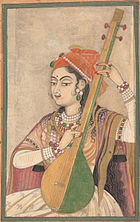
Let us salute the author Narendra Kusnur for this crisp treatise on the saga of music in Bengal. In fact, Bengal has been the fountainhead for all forms of art – performing, creative, visual (fine, modern and sculpture). As for music Bengal has produced the Numero Uno in both vocal and instrumental since centuries and will continue to do so for all times to come.
Certainly, the rich cultural heritage of Bengal could be among the factors for the concept that has defined MUSIC AS UNIVERSAL LANGUAGE.
Comments are closed.